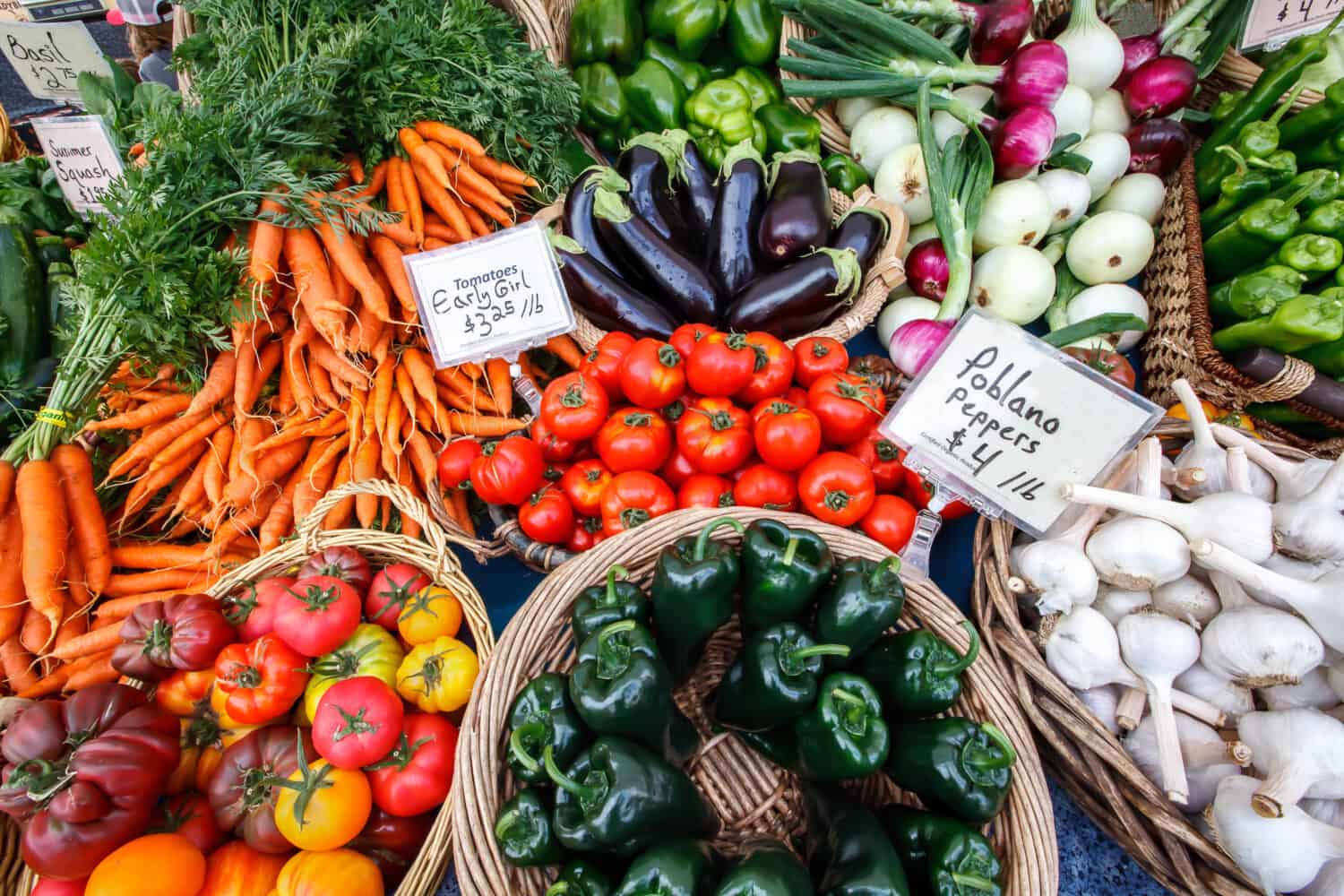Welcome to our guide on the best vegetables for Ohio! Okay, we may have slipped a couple of fruits in the mix to surprise you. Whether you’re an experienced gardener or just starting out, this article will help you make the most of Ohio’s unique climate and soil conditions. From hearty tomatoes to leafy greens, we’ve handpicked a selection of veggies that thrive in the Buckeye State. Get ready to dig in and cultivate your own delicious harvest!

Gardening in Ohio

You can grow vegetables in Ohio no matter how small your garden space is.
©ungvar/Shutterstock.com
Ohioans are fortunate to have a relatively ample vegetable-gardening season, which typically commences in March and extends all the way until late November. However, achieving gardening success in Ohio relies not only on selecting the appropriate vegetables but also on carefully considering when to plant them. The state is categorized into two USDA hardiness Zones: Zone 5 and Zone 6. While a majority of Ohio falls within the boundaries of Zone 6, there are scattered pockets where Zone 5 conditions prevail.
In these zones, gardeners can explore an array of delightful vegetables that thrive in Ohio’s climate. With its moderate temperatures and favorable growing conditions, this region presents opportunities for cultivating various crops throughout the year. From cool-season favorites such as lettuce, spinach, and peas that flourish during springtime to warm-weather staples like tomatoes, peppers, and cucumbers that thrive in summer months. Ohio’s diverse seasons allow for an abundance of fresh produce.
Furthermore, adventurous gardeners may experiment with unique varieties specifically suited to Ohio’s climatic nuances. Some popular choices include hearty root vegetables like carrots and beets that withstand colder temperatures or leafy greens such as kale or Swiss chard, known for their resilience throughout autumn frosts.
Timing

Soil thermometers are a valuable gardening tool to get your timing just right.
©VladisChern/Shutterstock.com
Timing is crucial when it comes to maximizing the potential of each growing season. It is essential to understand that certain vegetable plants, such as broccoli and cabbage, thrive with an early start, while others flourish once the soil has warmed up adequately. To assist you in planning your garden effectively, we have provided a chart below that outlines germination temperatures for a variety of common vegetables. By adhering to these recommended guidelines, you can ensure optimal growth and yield from your Ohio vegetable garden. These temperatures are the lowest that the seeds will germinate. Warmer temperatures may give better yields.
| Temperature Fahrenheit | Vegetables for Ohio |
|---|---|
| 30 Degrees | Parsnips, Spinach, Onions, Lettuces |
| 40-45 Degrees | Carrots, Cauliflower, Parsley, Peas, Radish, Beets, Cabbage, Turnip |
| 50 Degrees | Swiss Chard |
| 60 Degrees | Beans |
| 65 Degrees | Pumpkins, Cucumbers, Squash (70 is even better) |
| 75 Degrees | Tomato, Tomatillo, Eggplant, Peppers, Okra |
Cool Season Vegetables—Spring and Fall
A cool season vegetable is a type of vegetable that is best suited for growth in cooler temperatures, typically between 45-75°F. This type of vegetable generally grows in the spring and fall months, when temperatures are lower than in the hot summer months. Examples of cool-season vegetables include broccoli, cabbage, kale, lettuce, peas, spinach, and turnips.
Leaf Lettuces
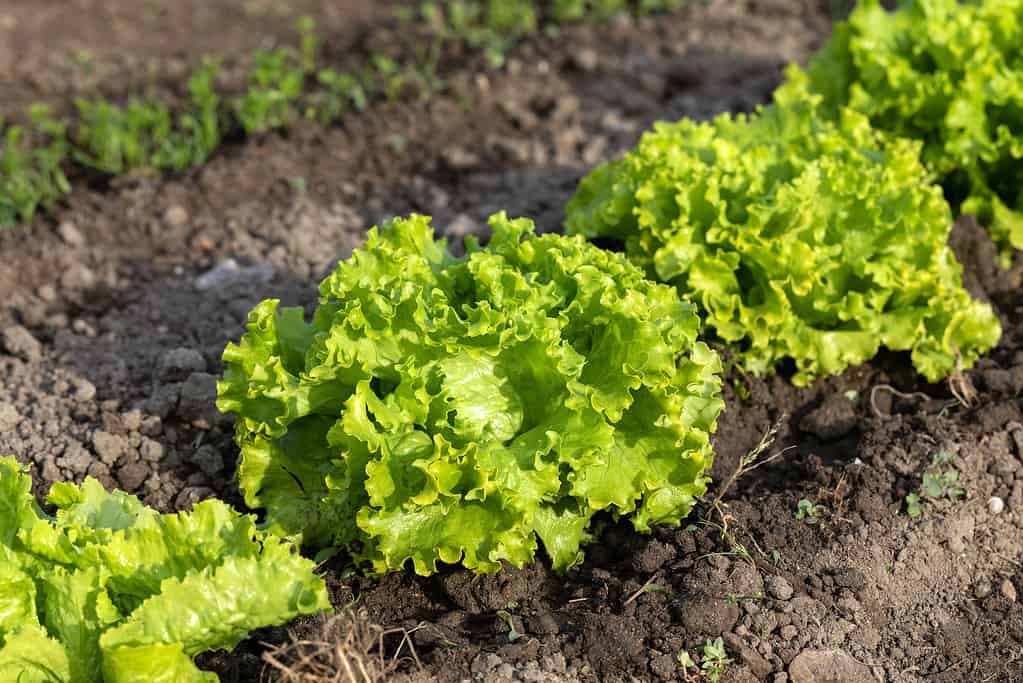
Almost any type of lettuce will grow well in Ohio.
©Thomas Pajot/iStock via Getty Images
Leaf lettuces are not only easier to grow than head lettuces, but they also offer a vibrant array of colors and textures that can add visual appeal to any garden. Whether you prefer the classic green varieties or want to experiment with red, purple, or even speckled leaves, leaf lettuce offers endless possibilities. To ensure a bountiful harvest of sweet and crisp leaves, directly sow the seeds in your Ohio garden as early as March or April when the weather conditions are favorable for germination and growth. By starting early, you can enjoy an abundant crop of these delicious greens throughout the season.
Broccoli and Cauliflower

Broccoli is chock-full of vitamins and nutrients and is a great vegetable for Ohio.
©MarinaVarnava/Shutterstock.com
Growing broccoli and cauliflower in Ohio is relatively easy and can be done with minimal effort. To get started, you’ll need a sunny spot with well-draining soil. Cauliflower and broccoli prefer a soil pH between 6.0 and 7.5 and will need to be fertilized with a balanced fertilizer. While both crops can be planted in the spring, it is best to wait until mid-May or early June.
Plant about 18-24 inches apart in rows that are 30-36 inches apart. When the heads begin to form, you should cover the heads with the outer leaves of the plant to keep them from getting sunburned. You should harvest the heads when they are firm and full.
Both broccoli and cauliflower will need to be watered regularly, ideally about 1 inch per week. Once harvested, the plants should be removed from the garden to prevent them from going to seed. With the right soil, fertilization, and regular watering, you can have a successful crop of broccoli and cauliflower in Ohio.
Radishes
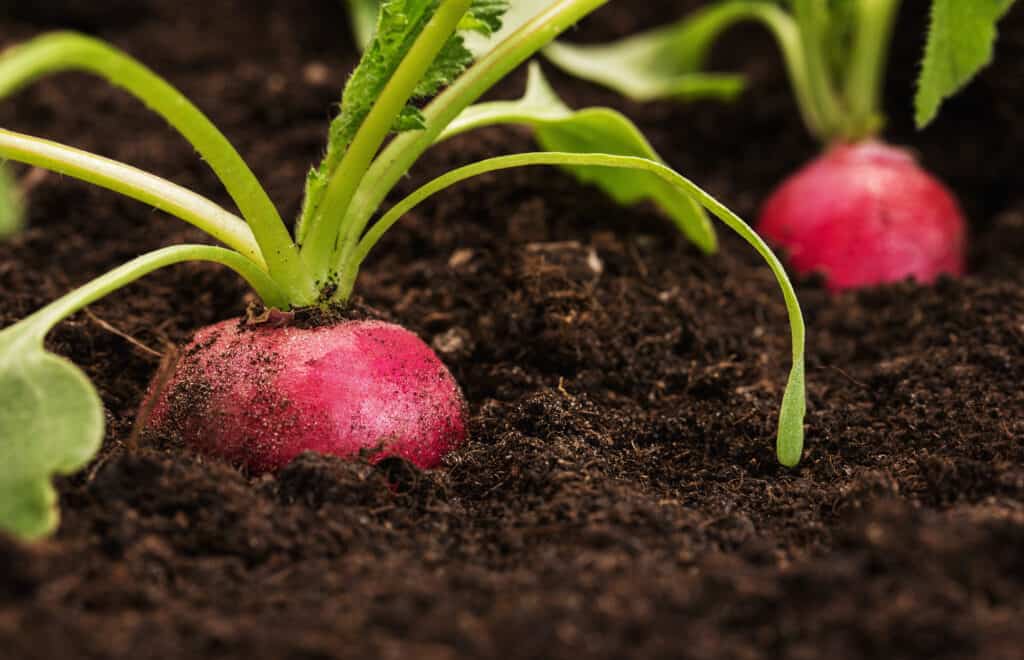
Plant radishes in the spring when the temperatures are still cool.
©iStock.com/Nastco
Radishes, a versatile and vibrant crop, thrive in the Ohio climate. With their fast growth rate and assortment of colors, they are an excellent addition to any garden. To ensure successful cultivation, it is crucial to monitor radishes closely, as they tend to split when oversized. Harvesting them at a younger stage ensures maximum flavor and tenderness. When growing radishes in Ohio, provide well-drained soil rich in organic matter and water consistently throughout their maturation period. These cold-hardy vegetables can be sown directly into the ground or started indoors for an earlier harvest. Enjoy the delightful crunch and peppery taste of homegrown radishes all season long!
Peas
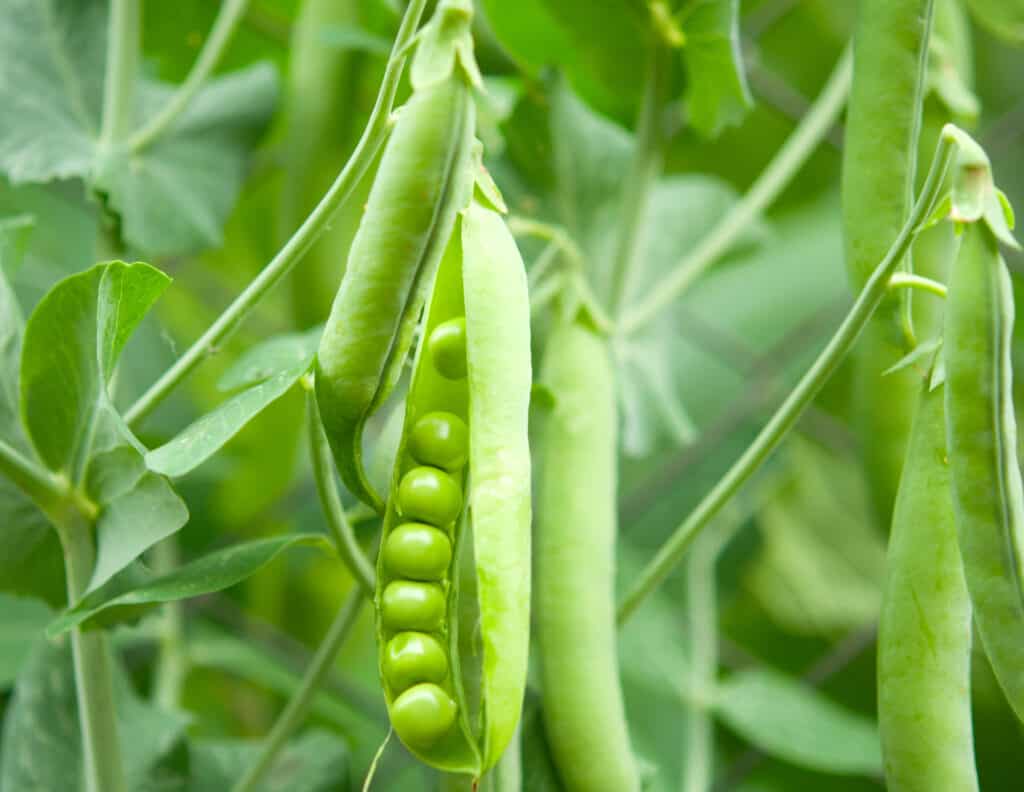
If you are looking for a fast vegetable for Ohio, peas may be just the thing.
©iStock.com/ksena32
Peas, a delightful early garden treat, thrive in Ohio’s moderate climate. To ensure a successful harvest, start by planting the seeds in March or April when the soil is workable, and temperatures hover around 45-75°F. Choose a sunny spot with well-draining soil for optimal growth. As peas are climbers, provide sturdy support like chicken wire or branches with string to train them upwards. Regularly water the plants to keep the soil moist but not waterlogged. With proper care and attention, you’ll soon enjoy an abundant crop of delicious peas straight from your Ohio garden!
Beets
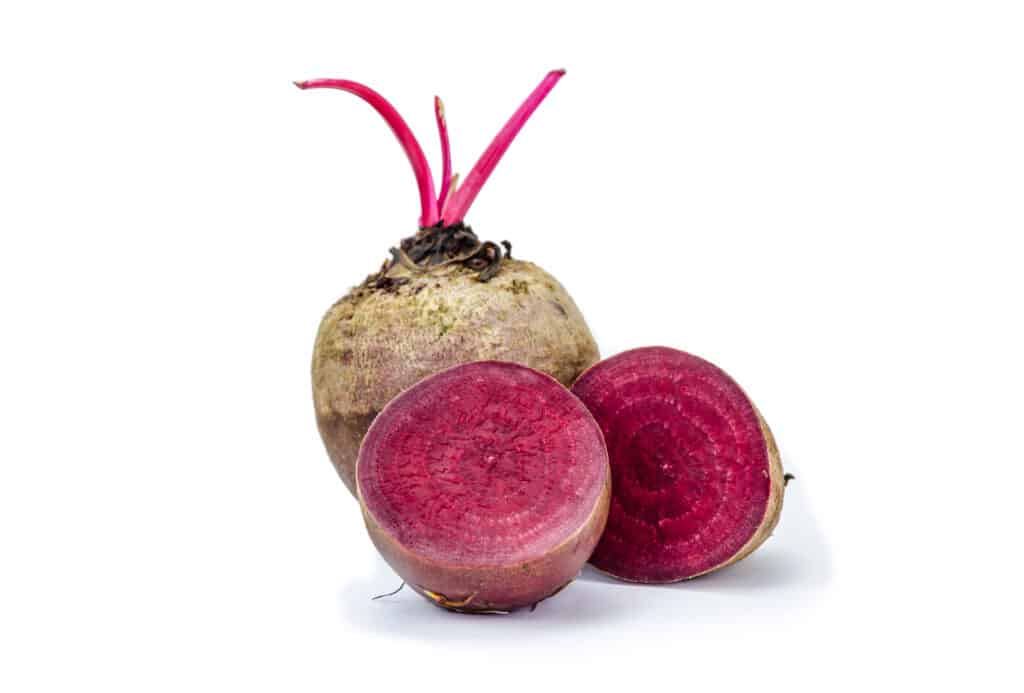
Every different variety of beet will grow in Ohio.
©Pingun/Shutterstock.com
Beets, a versatile and nutritious vegetable, flourish in the cooler spring and fall temperatures of Ohio. To successfully grow beets in this region, it is recommended to plant two crops of seeds—one in spring and another in late summer. Begin by preparing well-drained soil enriched with organic matter and ensuring a pH level between 6.0-7.5. Sow the beet seeds directly into the ground at a depth of 1/2 inch, spacing them about 2 inches apart within rows that are approximately 12 inches apart. Regularly water the plants to keep the soil consistently moist but not waterlogged.
As they mature, thin out overcrowded seedlings so each beet has ample space to develop roots and bulbs properly. Harvest beets when they reach the desired size—typically around 1-3 inches in diameter—for optimal flavor and tenderness. With proper care and attention, cultivating vibrant beets can become an enjoyable and rewarding experience for Ohio gardeners seeking fresh homegrown produce throughout different seasons.
Kale
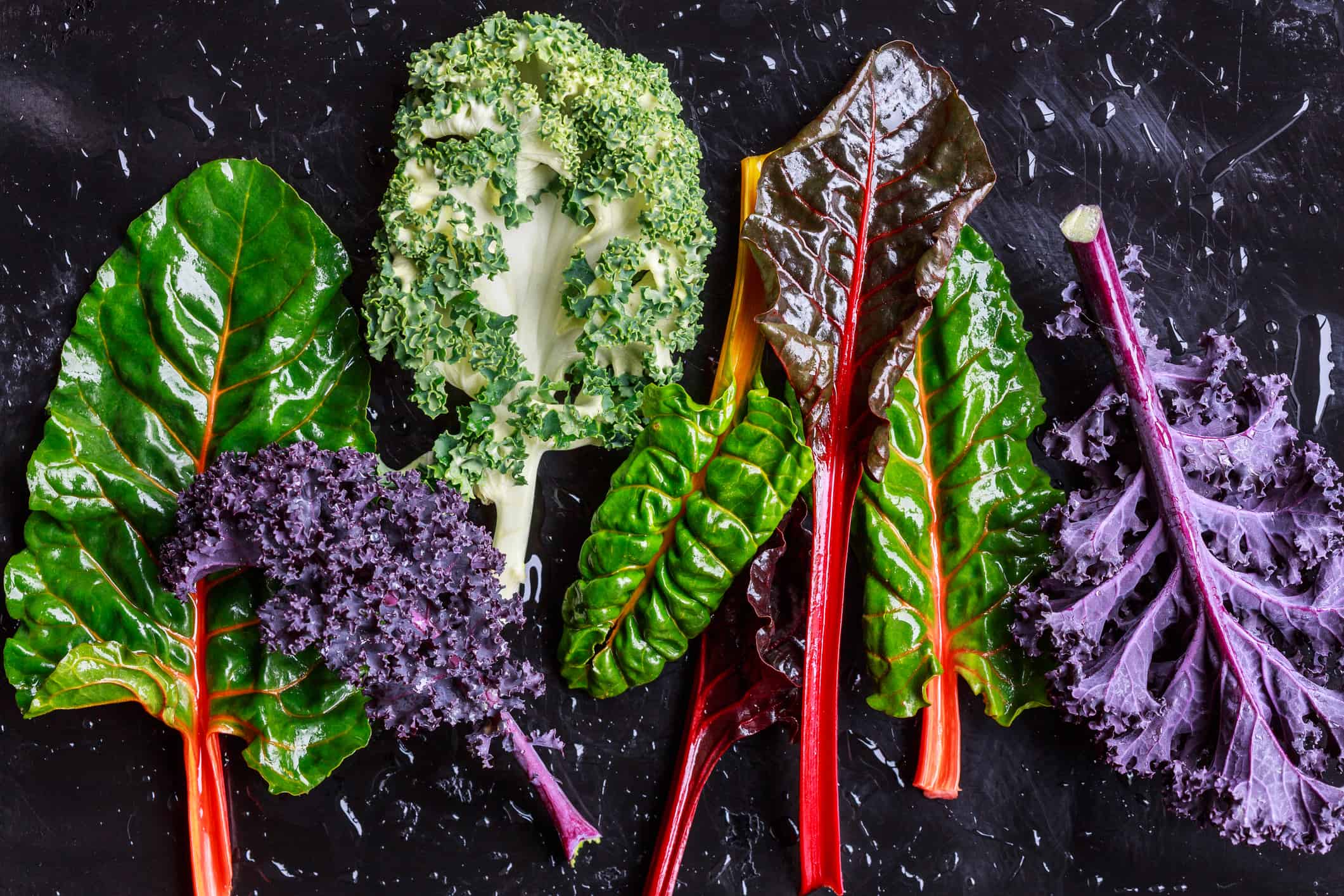
Purple kale and Swiss chard are both excellent vegetables for Ohio gardeners.
©iStock.com/Quanthem
Kale and other greens thrive in Ohio’s spring weather, making them ideal crops for local gardeners. To grow kale successfully, start by selecting a sunny spot with well-draining soil. Prepare the soil by adding compost or organic matter to enhance its fertility. Sow kale seeds directly into the ground, spacing them about 12 inches apart.
Keep the soil consistently moist but avoid overwatering. Regularly remove any weeds that may compete with your plants for nutrients and water. Harvest the leaves when they reach their desired size, ensuring a continuous supply of nutritious greens throughout the season.
Warm Season Vegetables—Summer
A warm-season vegetable is a type of vegetable that is planted and harvested during the warmer months of the year, typically between the months of April and October. These vegetables are usually more heat-tolerant and can tolerate warmer temperatures than other vegetables. Examples of warm-season vegetables include tomatoes, peppers, eggplants, squash, melons, okra, and cucumbers.
Squash

Zucchini is a type of summer squash that loves the summer heat in Ohio.
©Pixel-Shot/Shutterstock.com
Squash, a versatile vegetable that comes in both summer and winter varieties, can be successfully grown in Ohio with a few key considerations. To avoid insect problems, it is recommended to use transplants rather than direct seeding. Additionally, delaying the planting until mid-June can help prevent potential pest infestations. When selecting squash plants for cultivation in Ohio’s climate, it is essential to choose varieties that are well-suited for the region’s growing conditions. By following these tips and providing proper care throughout the season, gardeners in Ohio can enjoy an abundant harvest of delicious and nutritious squash.
Tomatoes
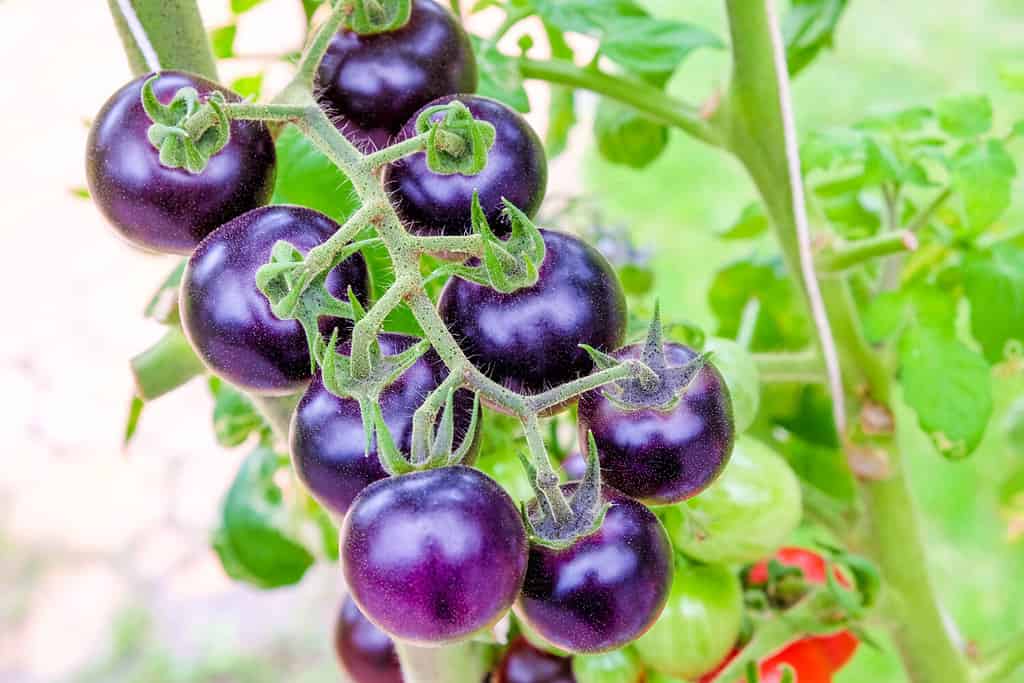
Growing beautifully colored heirloom tomatoes is one of the joys of a home garden.
©Nattapol_Sritongcom/Shutterstock.com
We know that, technically, tomatoes are a fruit. But nevertheless, growing tomatoes in Ohio can be a challenging yet immensely rewarding endeavor. To ensure success, it is best to start with transplants rather than seeds. Wait until warm weather arrives before planting them in well-draining soil that receives ample sunlight.
Proper staking is essential to support the vigorous growth of tomato plants and prevent them from sprawling on the ground. Throughout the growing season, it is crucial to provide consistent watering, making sure to avoid wetting the leaves as this can lead to disease problems. By following these steps diligently, Ohio gardeners can cultivate thriving tomato plants and enjoy a bountiful harvest.
Sweet Corn
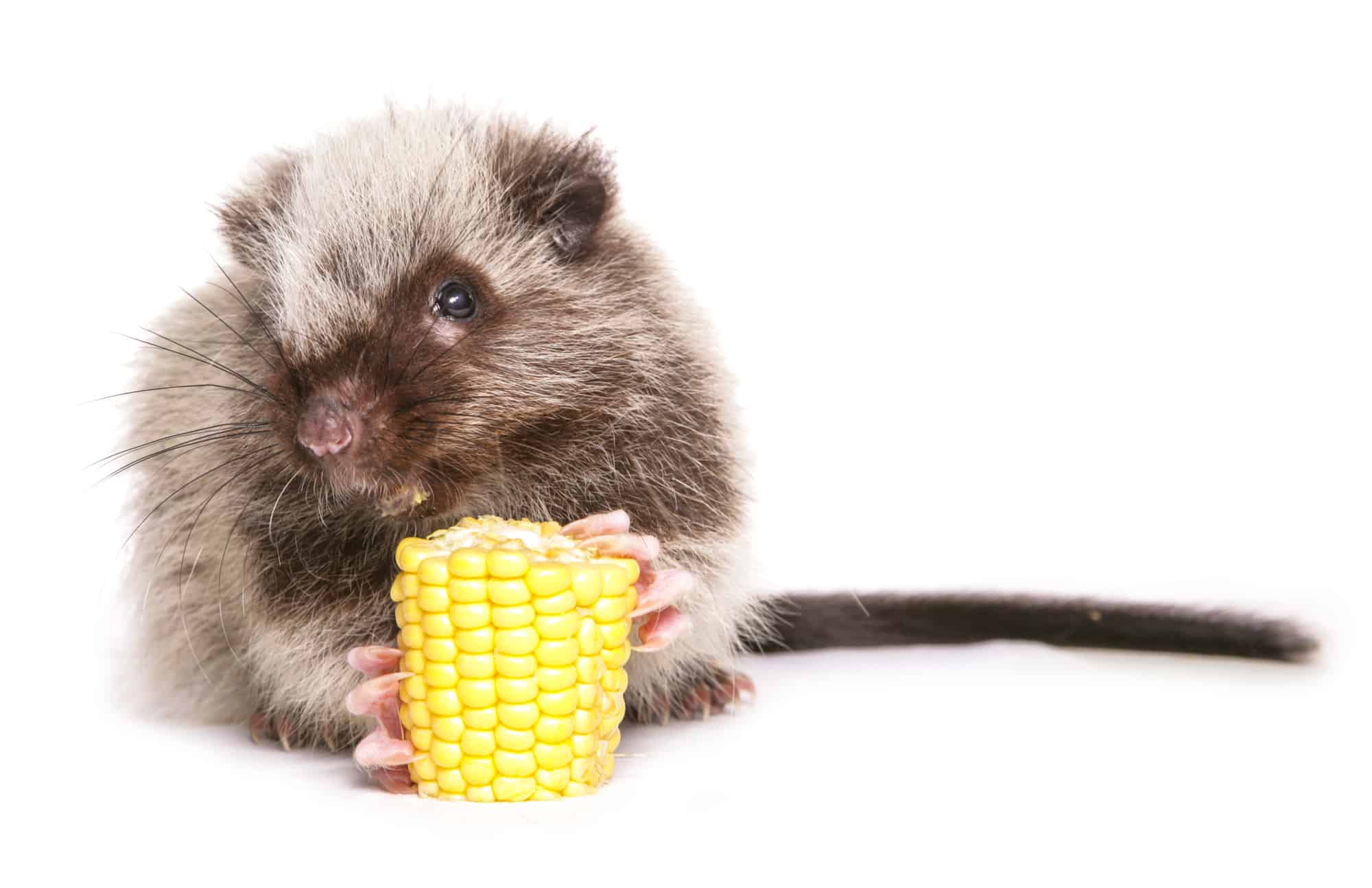
Humans aren’t the only animals that love sweet corn at their barbeques.
©chrisbrignell/Shutterstock.com
Sweet corn, a highly coveted vegetable, can pose challenges for pocket gardens in Ohio. To optimize pollination and ensure successful growth, it is recommended to plant corn in a block formation comprising two or three rows rather than a single long row. This arrangement promotes efficient cross-pollination between the plants, increasing the chances of robust ear development. Additionally, selecting appropriate sweet corn varieties that are well-suited for Ohio’s climate and soil conditions will further enhance the chances of a bountiful harvest.
Eggplant
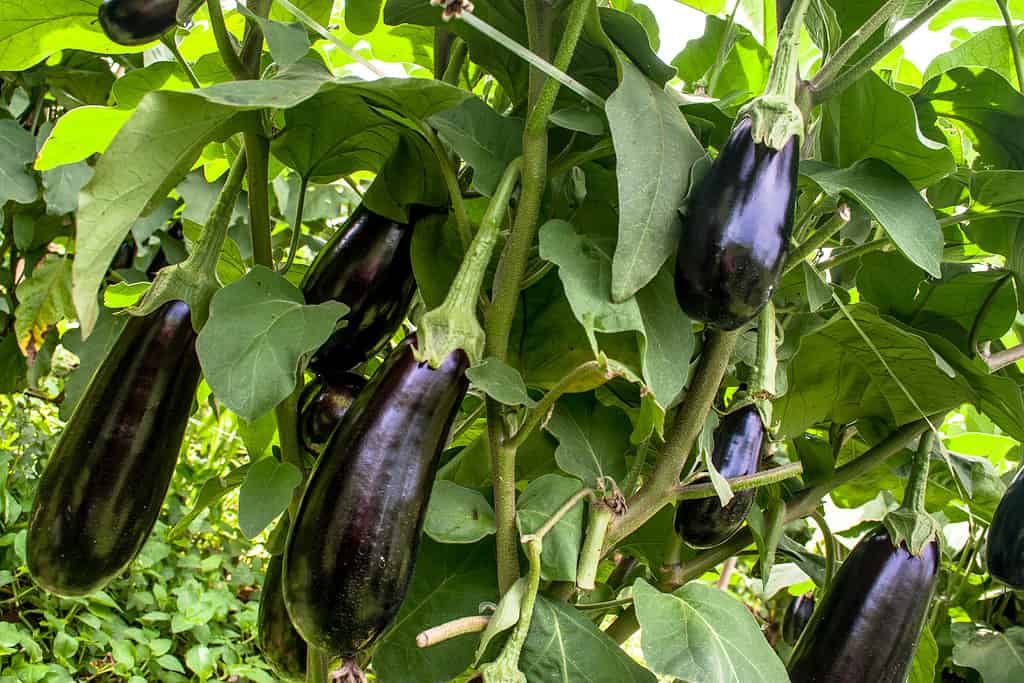
Growing more expensive vegetables in your own garden can save you a lot of money on grocery bills.
©Alf Ribeiro/Shutterstock.com
Eggplants, with their wide range of varieties from Albino to Black Beauty to Little Fingers, offer a delightful addition to any Ohio garden. These versatile vegetables are relatively easy to grow, making them an ideal choice for beginners. To ensure successful growth, it is important to monitor potential threats such as beetles closely.
Select a sunny, well-drained spot in the garden rich in organic matter and wait until the threat of frost has passed before planting. Place plants or seeds 24-36 inches apart with adequate support through stakes or cages. Water one niche per week unless rain provides sufficient moisture. Monitor plants for pests, and consider handpicking or introducing beneficial insects. Harvest when fruits reach the desired size but are still firm and glossy. Cut stems above the calyx (green top) using a sharp knife or pruning shears without damaging nearby foliage.
Melons

Melons are definitely fruits and not vegetables.
©iStock.com/Anna_Belova
Even though melons are not vegetables, they are a super fun food to grow in your garden. Melons are a popular summertime treat, and Ohio’s climate makes it a great place to grow them. There are several varieties that are well suited for the state, including watermelons, cantaloupes, and honeydews.
When planting melons, the soil should be well-drained and have a pH level between 6.2 and 6.8. It’s best to plant melons in a location that receives full sun, and when possible, try to use a raised bed to improve drainage. To give the plants the best chance of success, fertilize the soil prior to planting. You’ll also need to keep the soil consistently moist throughout the growing season.
When it’s time to harvest the melons, look for signs that they are ripe, such as a yellowish hue on the underside and a sweet aroma. Be sure to use caution when picking them, as the vines can be delicate.
Peppers
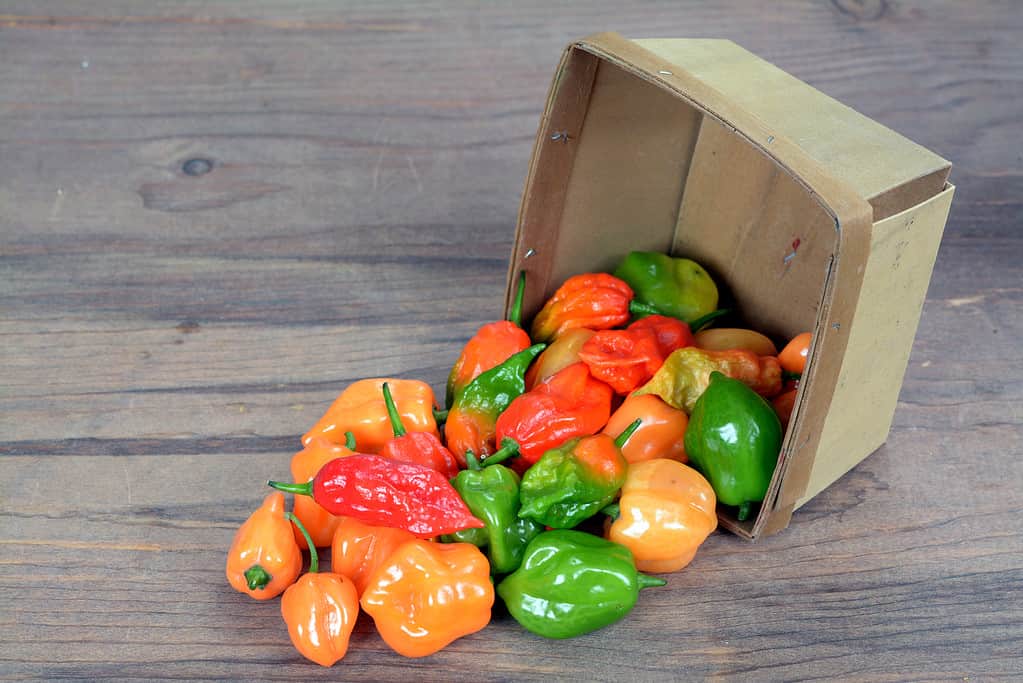
In the heat of summer, peppers will thrive!
©AN NGUYEN/Shutterstock.com
Ohio is a fantastic region for cultivating hot peppers, as the state’s climate and soil conditions provide an ideal environment for their growth. To successfully cultivate these fiery delights, there are a few key factors to consider. Start by selecting the right pepper varieties suited for Ohio’s growing season, such as jalapenos or habaneros, which thrive in warmer temperatures.
When it comes to planting hot peppers in Ohio, timing is crucial. Wait until all danger of frost has passed before transplanting seedlings into your garden or using seeds directly outdoors. Ensure that your chosen location receives ample sunlight throughout the day and offers well-draining soil with good organic matter content.
To give your hot pepper plants a strong start, prepare the soil by incorporating compost or aged manure to improve its fertility and drainage. When transplanting seedlings, space them adequately apart to allow for proper air circulation and prevent overcrowding.
Throughout the growing season, maintain consistent soil moisture, but beware of overwatering (which could cause root rot). Mulch around plants to retain moisture and keep weeds away. As peppers grow taller and produce fruit, stake or cage them for support. Monitor pests (e.g., aphids or caterpillars) and use natural remedies to control infestations without chemicals. Harvesting time varies depending on the variety but generally occurs when peppers reach the desired size.
Cucumbers
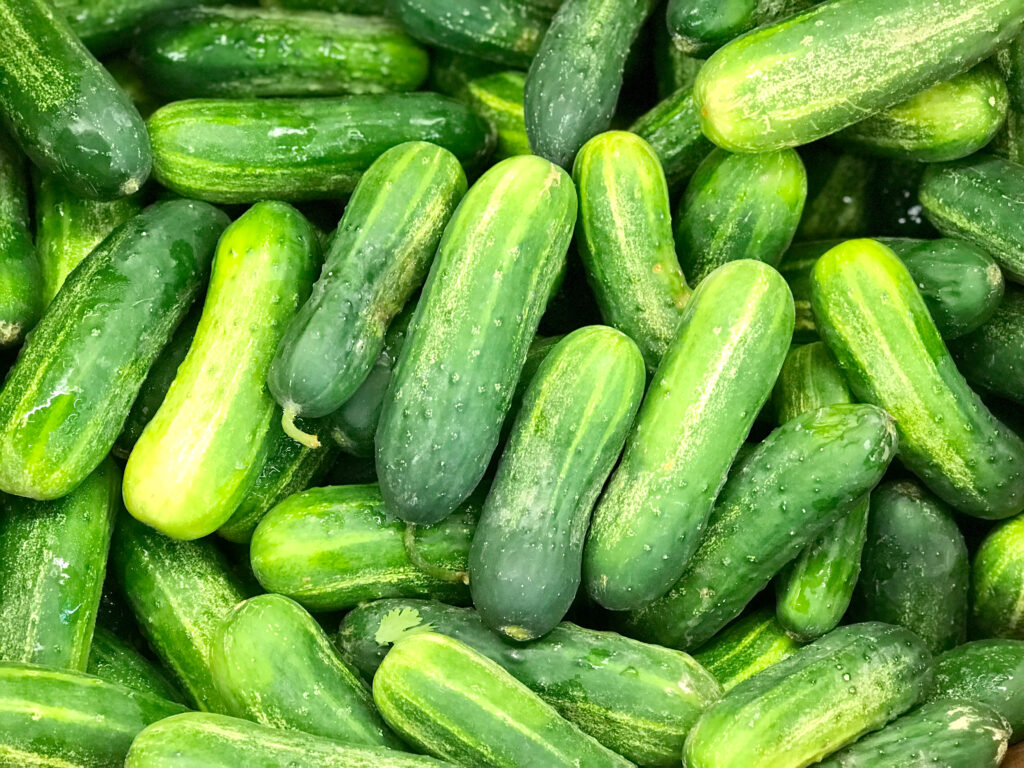
Try growing your cucumbers on a tall trellis to save space in your garden.
©Mohammad Hossen/Shutterstock.com
Cucumbers are one of the most popular vegetables to grow in Ohio due to their versatility and delicious taste. To successfully cultivate cucumbers, there are a few key factors to consider. Firstly, choose a sunny location for your cucumber plants, as they thrive in full sunlight. Secondly, ensure that the soil is well-drained and rich in organic matter, providing necessary nutrients for healthy growth. Start cucumber seeds indoors before transplanting them outside after the last frost date. Regular watering is crucial for cucumbers, especially during dry spells. Additionally, trellising or using cages can help support vine growth and optimize space utilization while preventing diseases caused by contact with damp ground.
Green Beans
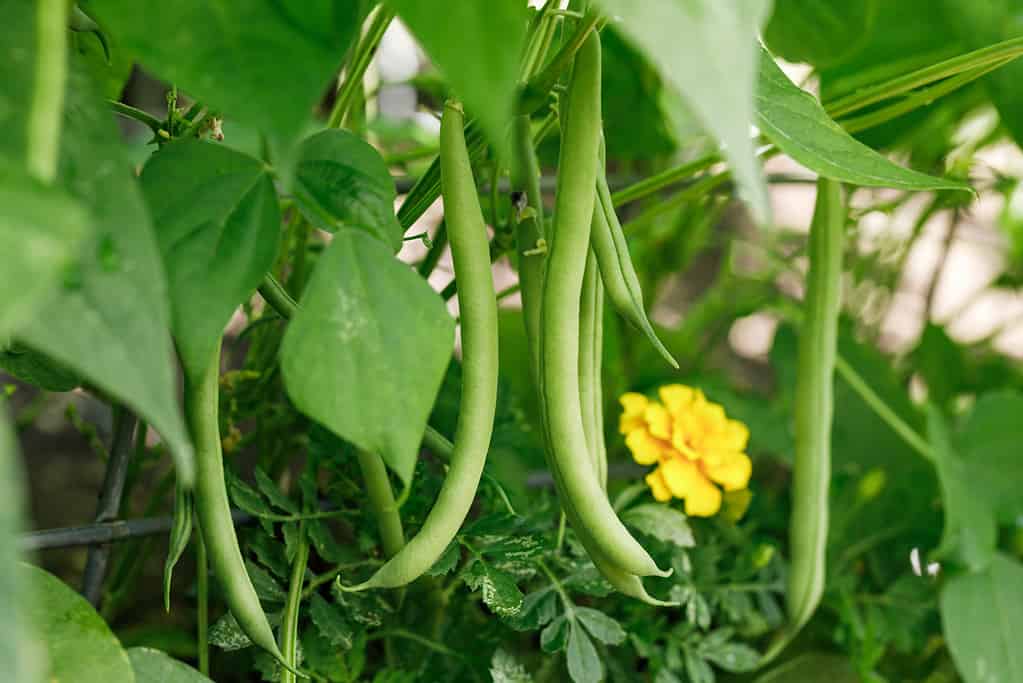
One plant can yield two pounds of green beans.
©iStock.com/eurobanks
Green beans are a popular and easy-to-grow vegetable in Ohio’s diverse climate. To successfully grow green beans, there are a few key steps to follow. Firstly, choose the right variety that thrives in Ohio’s growing conditions, such as Blue Lake or Kentucky Wonder. Start by preparing the soil adequately. It should be well-drained and rich in organic matter. Sow the seeds directly into the garden after all frost risks have passed, typically around mid-May. One great tip is to plant seeds every week for a month for a continuous harvest of beans.
When planting green beans, ensure they receive at least six hours of direct sunlight daily for optimal growth. Regularly watering is crucial to keep the soil consistently moist but not waterlogged. It is advisable to mulch around the plants to retain moisture and suppress weed growth.
To enhance productivity, provide support for climbing varieties by using trellises or stakes. This practice prevents bean vines from sprawling on the ground and minimizes disease risks.
Harvesting green beans can begin about 50-60 days after sowing when pods reach their desired length but are still tender. Frequent picking encourages further production while preventing overripening.
Thank you for reading! Have some feedback for us? Contact the AZ Animals editorial team.

